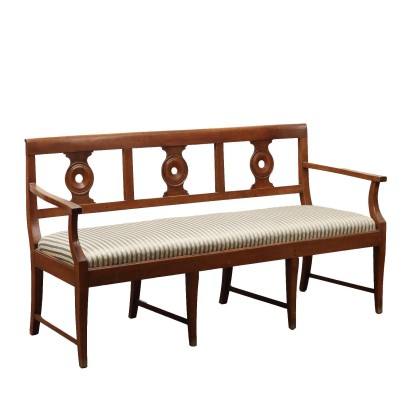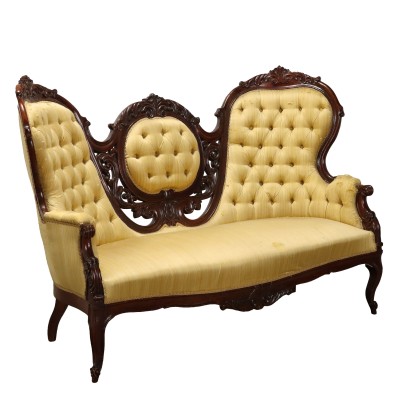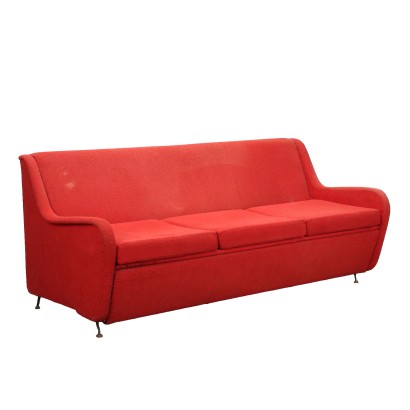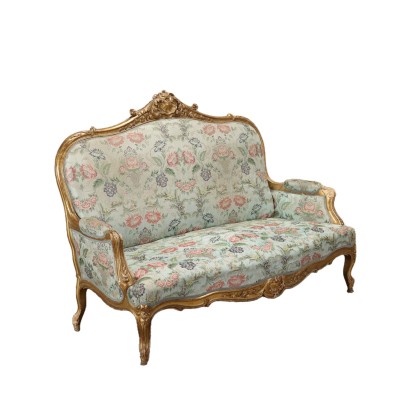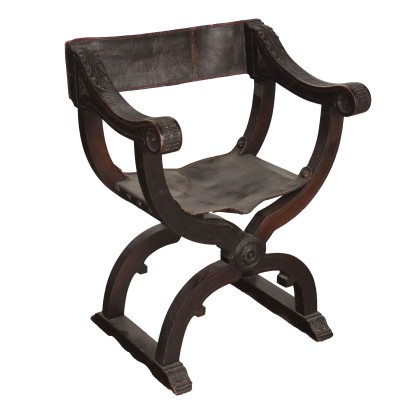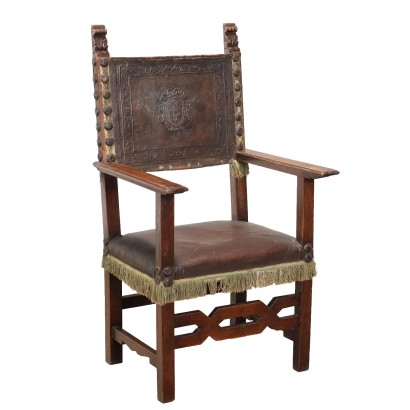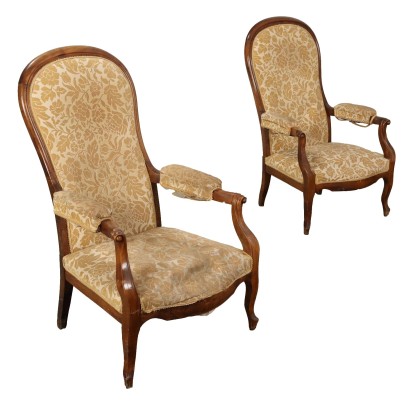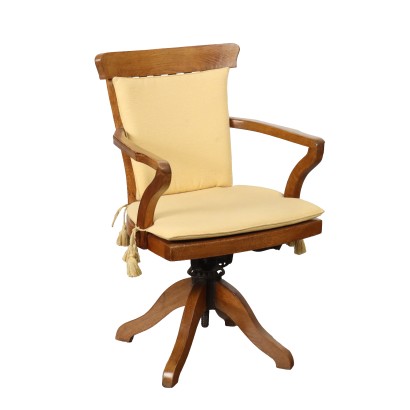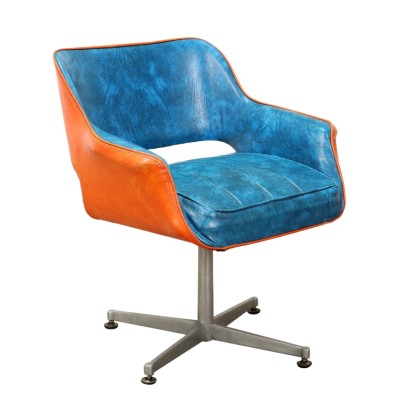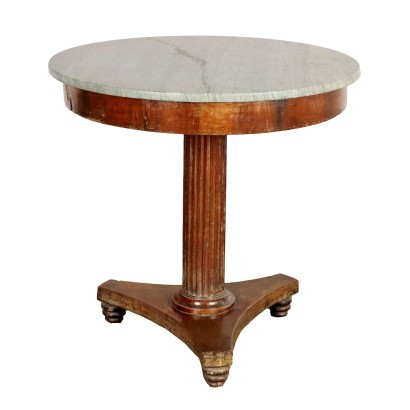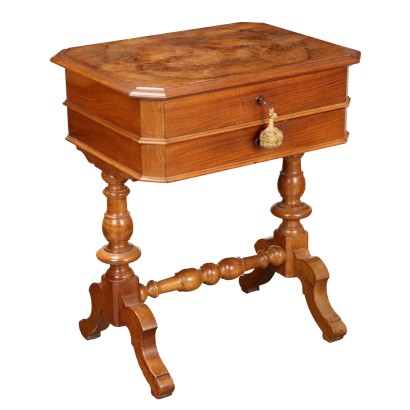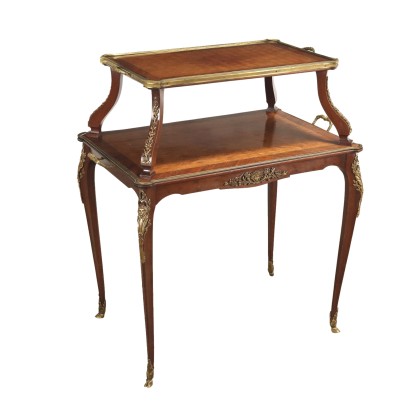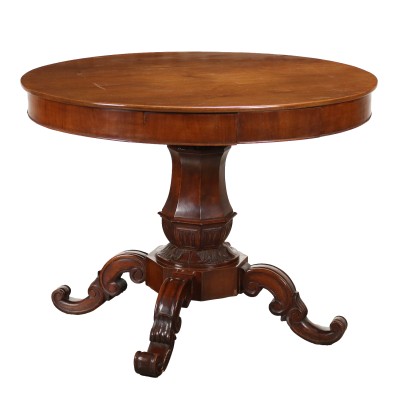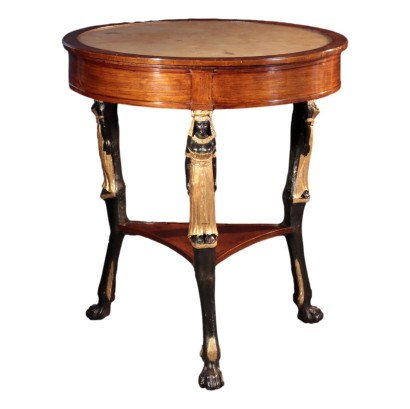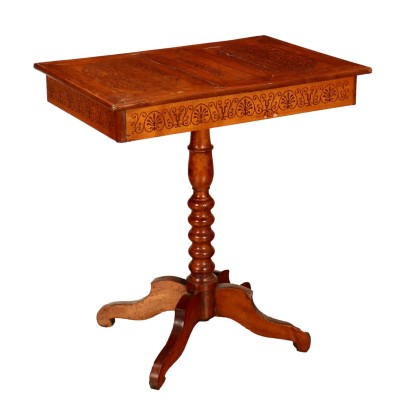Antique Directoire Sofa Walnut Padding Italy XVIII-XIX Century - Italy, Late XVIII - Early XIX Century
Features
Italy, Late XVIII - Early XIX Century
Style: Directoire (1790-1804)
Age: 19th Century / 1801 - 1900 , 18th Century / 1701 - 1800
Origin: Italy
Main essence: Walnut
Material: Padded
Description
Directoire sofa in walnut, Italy, late 18th - early 19th century. Open backrest with shaped panels with a perforated circular central motif. Padded seat. Saber-shaped hind legs.
Product Condition:
Product which due to age and wear requires restoration and re-polishing. We try to present the real state of the furniture as completely as possible with photos. If some details are not clear from the photos, what is stated in the description applies.
Dimensions (cm):
Height: 85
Width: 162
Depth: 60
Seat height: 46
Additional Information
Style: Directoire (1790-1804)
In this short period of time we witness, in the furniture, an accentuation of the archaeological rigor and at the same time an accentuated linear severity is formulated that in fact preludes and anticipates forms and ornaments that will then be typical of the Empire style.The Direttorio period furniture abandons the delicate pastel colors that characterize the Louis XVI production in favor of the dark magnificence of mahogany, which in its vast range of essences will be by far the most appreciated wood in this period.
Added to this is a general abandonment of floral inlay trends to which simple ebony or amaranth stained wood threads are preferred, the most fashionable is the inclusion of slight linear brass profiles.
The novelties are grafted on a trend that usually finds types already widespread in the neoclassical era, and in some cases there is no lack of significant innovations: the chairs, often painted in light colors and archaeological motifs, are distinguished by the typical backrest upholstered or finished with openwork which is rolled "en crosse" and "S".
The rear legs are all the rage when curved like a saber and the wraparound backrest type, known as a gondola, is widespread.
For studies and libraries, models of chairs characterized by a high concave backrest, called "en hémicycle", with a usually solid structure and with a seat covered in leather, spread.
The use of the secrétaires is widespread and the type of toilet is completely new, now similar to a console on which rests a tilting mirror within hinged plates.
Certainly the most imaginative novelty of this period is the graceful psyche, consisting of a large oval-shaped or rectangular mirror, mounted within high wooden supports and generally supported by saber-shaped legs.
This is the era where the oval or round dining table is very popular, while the desk continues to maintain the shape of the à bureau plats models already known in the previous era.
In this period there are no particular technical-constructive innovations, the technologies remain those already in use since the beginning of the mid-eighteenth century.
Find out more about the Directory with our insights:
The game table, this unknown
Age:
19th Century / 1801 - 1900
19th Century / 1801 - 190018th Century / 1701 - 1800
18th Century / 1701 - 1800Main essence: Walnut
Walnut wood comes from the plant whose botanical name is juglans regia , probably originally from the East but very common in Europe. Light or dark brown in color, it is a hard wood with a beautiful grain, widely used in antique furniture. It was the main essence in Italy throughout the Renaissance and later had a good diffusion in Europe, especially in England, until the advent of mahogany. It was used for solid wood furniture and sometimes carvings and inlays, its only big limitation is that it suffers a lot from woodworm. In France it was widely used more than anything else in the provinces. In the second half of the eighteenth century its use decreased significantly because mahogany and other exotic woods were preferred.Material: Padded
Other customers have searched:
Divano, duchesse brisée, dormeuse, ottomana, canapè, sofà..
Tutto quello che c'è da sapere sui divani lo trovi nel nostro blog e su FineArt:
Leggi di più
Un divano dell''800 esempio di eclettismo
Un divano neoclassico emiliano in cui un dettaglio è importante: Il nodo d'amore
Storia della dormeuse
Divano modulare Camaleonda di Mario Bellini
Divano "IX Triennale" Marco Zanuso per Arflex
Divano due posti 'Soriana', Afra & Tobia Scarpa per Cassina
Divano "D70", Osvaldo Borsani per Tecno
Quattro Divanetti lombardo-veneto del XIX secolo
Sull'antiquariato in generale dai un'occhiata anche a:
Classic Monday: da un pezzo dei nostri magazzini alla storia dell'antiquariato
L'antiquariato dalla A alla Z: il Dizionario dell'Antiquariato
Il dizionario dell'antiquariato - Lastronatura
Il dizionario dell'antiquariato - Mascherone
Il dizionario dell'antiquariato - Natura morta
Il dizionario dell'antiquariato - Opificio
Il dizionario dell'antiquariato - Pastiglia
Il dizionario dell'antiquariato - Savonarola
Il dizionario dell'antiquariato - Rosone
Classic Monday: da un pezzo dei nostri magazzini alla storia dell'antiquariato
L'antiquariato dalla A alla Z: il Dizionario dell'Antiquariato
Leggi di più
Un divano dell''800 esempio di eclettismoUn divano neoclassico emiliano in cui un dettaglio è importante: Il nodo d'amore
Storia della dormeuse
Divano modulare Camaleonda di Mario Bellini
Divano "IX Triennale" Marco Zanuso per Arflex
Divano due posti 'Soriana', Afra & Tobia Scarpa per Cassina
Divano "D70", Osvaldo Borsani per Tecno
Quattro Divanetti lombardo-veneto del XIX secolo
Sull'antiquariato in generale dai un'occhiata anche a:
Classic Monday: da un pezzo dei nostri magazzini alla storia dell'antiquariato
L'antiquariato dalla A alla Z: il Dizionario dell'Antiquariato
Il dizionario dell'antiquariato - Lastronatura
Il dizionario dell'antiquariato - Mascherone
Il dizionario dell'antiquariato - Natura morta
Il dizionario dell'antiquariato - Opificio
Il dizionario dell'antiquariato - Pastiglia
Il dizionario dell'antiquariato - Savonarola
Il dizionario dell'antiquariato - Rosone
Classic Monday: da un pezzo dei nostri magazzini alla storia dell'antiquariato
L'antiquariato dalla A alla Z: il Dizionario dell'Antiquariato



